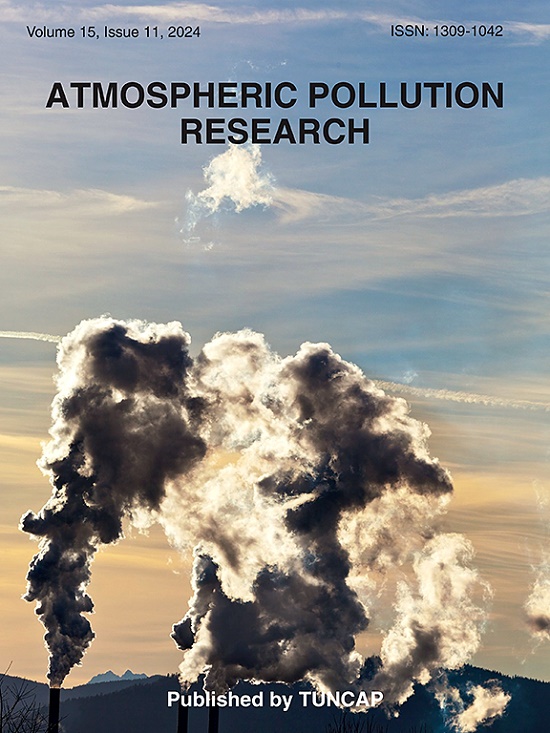Spatiotemporal variations of tropospheric formaldehyde and its potential sources over Pakistan based on satellite remote sensing
IF 3.9
3区 环境科学与生态学
Q2 ENVIRONMENTAL SCIENCES
引用次数: 0
Abstract
Formaldehyde (HCHO) is a trace gas that harms the atmospheric environment and human health. Therefore, it is essential to analyze the spatial dynamic characteristics of HCHO, potential sources, and the associated health risks. To do so, the current study utilized the TROPOspheric Monitoring Instrument (TROPOMI) HCHO observations to analyze the spatiotemporal variations of HCHO in Pakistan from 2019 to 2023. Moreover, the potential source areas of HCHO are also identified using the potential source contribution function (PSCF) and concentration-weighted trajectory (CWT) technologies. The results indicate an annual average HCHO concentration increase in Pakistan from 114 μmol/m2 (in 2019) to 117 μmol/m2 (in 2023) with a 0.3% growth rate. The average HCHO concentration in Punjab (177 μmol/m2), Sindh (138 μmol/m2), and KPK (121 μmol/m2) provinces is above the country average (105 μmol/m2). Lahore, Gujranwala, and Peshawar are the top HCHO emitters in Pakistan with mean HCHO of 204.25 ± 18.85 μmol/m2, 202.51 ± 8.14 μmol/m2, and 201.65 ± 13.66 μmol/m2, respectively. The study found the industrial sector as the main contributor to HCHO emissions in Pakistan, followed by the residential and transportation sectors. The findings of the spatial correlation of HCHO with Normalized Difference Vegetation Index (NDVI) (R2 = 0.5) and Land Surface Temperature (LST) (R2 = 0.7) indicate the positive influence of NDVI and LST on HCHO concentration. Moreover, the CWT and PSCF analyses suggest that in addition to local emissions, transboundary air pollution from India, Afghanistan, Iran, and Arabian Sea airflow also contributed to the transport of HCHO in Pakistan.

求助全文
约1分钟内获得全文
求助全文
来源期刊

Atmospheric Pollution Research
ENVIRONMENTAL SCIENCES-
CiteScore
8.30
自引率
6.70%
发文量
256
审稿时长
36 days
期刊介绍:
Atmospheric Pollution Research (APR) is an international journal designed for the publication of articles on air pollution. Papers should present novel experimental results, theory and modeling of air pollution on local, regional, or global scales. Areas covered are research on inorganic, organic, and persistent organic air pollutants, air quality monitoring, air quality management, atmospheric dispersion and transport, air-surface (soil, water, and vegetation) exchange of pollutants, dry and wet deposition, indoor air quality, exposure assessment, health effects, satellite measurements, natural emissions, atmospheric chemistry, greenhouse gases, and effects on climate change.
 求助内容:
求助内容: 应助结果提醒方式:
应助结果提醒方式:


